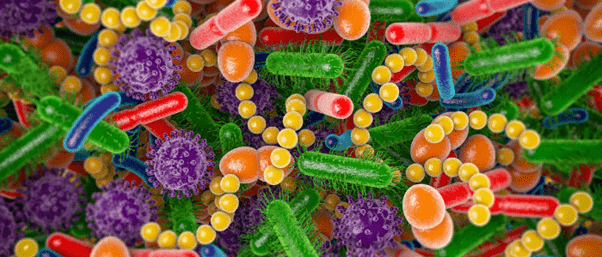Meet your microbial roommates

What makes a house, a home? A new study suggests that it’s the roommates you share it with, both human and microbial.
Previous research has investigated how human activity influences indoor exposures to specific pollutants, toxins and particles. Now, scientists from the University of California San Diego School of Medicine (CA, USA) and elsewhere have conducted a more in-depth survey of how the microbiomes of people and of the indoor environment interact, shaping the entire molecular and chemical make-up of a home.
To conduct the survey, the researchers set up an experimental test home, including bathrooms, a kitchen, socializing and work areas in Austin (TX, USA) during the summer of 2018. Over 26 days, 45 participants and additional visitors spent 6 hours at a time in the house and carried out scripted activities such as cooking, cleaning and socializing. Overnight visitors were not permitted.
At the beginning of the experiment, dubbed T1, the house was cleaned with bleach, although traces of molecules related to human activity remained. Prior to the arrival of the participants, the investigators swabbed the surfaces of the house and conducted different genomic, metabolic and chemical analyses to determine the distribution of detectable molecules and microbes.
At T2, 28 days later, the surfaces of the house were swabbed again, and the researchers detected a plethora of molecules and microbes, which were unevenly distributed throughout the house.
Molecules associated with skin care products, skin cells, drugs (like antidepressants and anabolic steroids), food-derived molecules, human or animal metabolites (including bile and fatty acids), amino acids, sugars and microbial metabolites were detected.
Most of the indoor molecules detected were human-derived metabolites, natural compounds (as opposed to synthetic), food, molecules associated with the outdoors and personal care products. The primary sources were thought to be food, human-associated microbes, feces, building materials and the microbes residing on them.
 Want to live longer? Look on the bright side of life
Want to live longer? Look on the bright side of life
Researchers find that higher optimism is linked to a greater lifespan and an increased likelihood of living past 90.
The main hotspots of molecular and microbial diversity were the kitchen and the toilet, even though regular cleaning of these areas caused their abundance to fluctuate. The authors note: “It appears that, even when a subset of chemistry is removed because of the cleaning, it is only temporary and/or partial, as the sum total of cleaning and human activities overall results in an increase in accumulation of richer chemistry.”
Commonly touched surfaces such as tables, light switches and doorknobs displayed more chemical diversity compared with areas such as floors, which could be because floors are cleaned more often. The least change in diversity between T1 and T2 was seen on surfaces not commonly touched by the participants, such as windows.
Researchers also found that surfaces were occupied by bacteria, fungi and other microbes, and their metabolites. Over time, regular cleaning of the surfaces had allowed the diversity of the microbes to change, as different species repopulated cleaned areas.
Notably, at T2, most of the microbes detected were human-derived, such as commensal species living on the skin or in the gut. This indicates that free-living microbes that are associated with the environment were somehow pushed out by cleaning and human activity.
In addition, the investigators discovered that at least 1% of the indoor molecules detected may have an effect on human health. For example, the bacterial species Paenibacillus was associated with molecules from coffee, and, in the test home, the species was found near and around the area where coffee was made. It is believed that Paenibacillus species could have an effect on human health, echoed by recent reports that drinking coffee is associated with improved cardiovascular health and a longer life.
The authors believe that these findings could be used to influence future building material designs to improve human health, though additional studies are required.